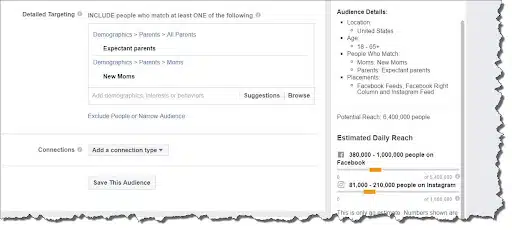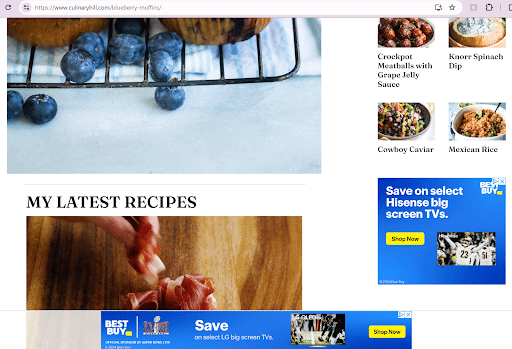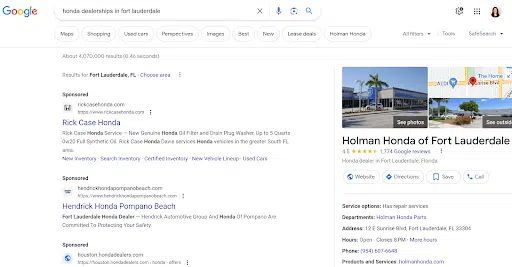-
by Zach Hoffman
According to reliable industry forecaster, Magna, advertising spend is projected to grow by 7.3% – surpassing $900 million. Events like the Presidential election and the Summer Olympics will play a part for many businesses as they attract larger-than-usual crowds this year. You may even be surprised that some of these events cost companies millions of dollars for one ad spot. For example, a 30-second Super Bowl commercial costs $7 million. With $900 million, you could buy 128 30-second Super Bowl advertising spots.
Fun facts aside, this projection isn’t really surprising (at least not to us). Not only are consumer eyeballs migrating away from cable TV to digital mediums like smartphones, streaming services, and social media networks, but television cannot compete with digital ads in multiple categories.
Let’s not jump ahead, though.
Exults Projections About TV Advertising
Diving more into expectations regarding future TV advertising, the following are 5 predictions you should know about.
Industries Matter
The top industries advertising on national U.S. broadcast and cable TV:
- Consumer Packaged Goods
- Pharmaceuticals (the United States and New Zealand are the only countries that allow this type of advertising)
- Media and Entertainment
- Insurance
- Technology
The top industries advertising locally on broadcast and cable TV:
- Automotive
- Communications
- Legal Services
If your business falls under any one of these categories, you may want to consider whether TV advertising can help your business scale up.
Streaming Platforms Will Grow
Ad spending on streaming platforms is projected to jump to $40.9 billion by 2027, a 63% increase from 2023. Most live TV viewers are 65 years or older. This is largely because younger demographics don’t pay for cable TV services. Instead, they rely on streaming services for their TV entertainment.
Storytelling Wins
Traditional TV has the most success with storytelling ads. For large and small companies, storytelling is a vital advertising tool. This type of ad resonates with viewers because it helps them connect with a particular brand on a human level, increasing trust. The more an audience trusts a brand, the more likely they are to make a purchase.
Political Ads Will Dominate
Political ad spending is expected to reach $15.9 billion in 2024. Most businesses want to stay out of politics. However, as the U.S. approaches another political campaign season, it’s important to plan your digital marketing strategies with those ads in mind. This is especially true if your business is heavily impacted by global and/or national events.
If you’re in construction, for example, your business may feel the ups and downs due to an increase in international taxes and fees for foreign materials like aluminum and steel. If these are materials you use every day that are essential to your business, it’s important to consider what it means by asking questions like…
Do I need to adjust my brand’s main messaging, tone, and voice for future ads?
Should I use more left or right-wing channels to reach my ideal audience?
How will others view my business if I were to advertise during campaign season?
Is now the time to use TV advertising to stand out from the noise?
Regardless of what you choose, remember that there will be more content published for politically charged ads, meaning more competition to reach the top of search results.
Unsure about how any of this applies to your business? Talk to Exults about the best digital marketing strategy for your business.
Overview Of TV Advertising For Businesses
TV advertising (like print) isn’t completely dead. And if you use it the right way, it can result in a good number of customer conversions. For this blog, we define “TV advertising” as promoting a product or service through commercials or sponsored content on cable, satellite, or streaming services.
TV Advertising Costs
The cost of TV advertising varies depending on whether you’re thinking local or national. On the local level, cost will also depend on the exact area you are hoping to target. Overall, you’re looking at spending a few hundred to a few thousand dollars per local ad. Nationally, you can expect to spend about $350,000 for a 30-second spot, and primetime slots can reach up to the millions.
Pros Of TV Advertising
While digital advertising is huge for marketing strategies, television ads do have their perks.
Reach A Broad Audience
In addition to digital marketing, TV advertising can help you reach an older audience who may not be on social media or streaming services. This can be especially helpful to know if your target audience leans on the more mature side – a solid strategy for advertising packaged goods, insurance, legal services, and pharmaceuticals.
Increase Brand Authority
Look, you’re on TV! Now, people can not only recognize you when your brand appears in front of them, but it can build your credibility as a business. This is an essential part of the marketing process to keep your consumers engaged and looking up to you as an authority figure in your respected industry.
Spread Brand Awareness
As your business and brand become more recognizable, you’re able to build an authority-type relationship with your audience. Again, this is hugely important for businesses wanting to establish a trusting relationship with their ideal customer. Remain consistent with your messaging to ensure your marketing efforts stick.
Want to include TV advertising in your marketing strategy? Call Exults today.
Projections About Digital Ads
5 predictions about digital advertising you should know more about.
Intent Is Key
46% of Google searches have local intent. We’ve discussed the importance of using local SEO to attract more customers and scale your business. And, until words and phrases like “near me” or “nearby” remain popular, local SEO isn’t going anywhere. When improving your business’s online visibility, local SEO needs to be part of your digital marketing plans.
Ad Budgets Will Be Spent Here
Nearly 70% of global advertising revenue goes to digital platforms. In conjunction with fewer people using cable, most searches are conducted online through mobile devices. Now more than ever before, people expect to be able to find answers and solutions instantly when searching online. If you’ve fallen behind in growing your digital presence, partner with a digital marketing agency to get your SEO back on track.
Social Media Advertising Will Grow
40% of young people prefer to use TikTok and Instagram for search rather than Google. If you haven’t started building a social media strategy for your business, you must consider digital marketing’s ever-shifting landscape. Optimizing your content for Google is one strategy. Optimizing content for emerging markets and social media platforms is another. Either way, tailoring your content to the platforms your audience is on most is essential for online marketing growth.
Talk to Exults today about SEO, social media marketing, and other digital marketing solutions.
Consider Voice-Enabled Search
50% of the U.S. population uses voice-enabled search each day. As technology improves, other features like AI, photo search, and voice-enabled searches are also becoming common practices among younger generations. As voice-to-text searches increase, they may influence keywords and search terms, search volume, and local SEO results.
Digital Advertising Summary
The problem for TV though is that digital ads have all those same perks, plus wayyyy more. First, we’ll review the cost of digital advertising.
The Cost Of Digital Ads
Because digital advertising spans multiple platforms and channels, it’s tough to determine a reasonable price range for them. However, they’re almost always a more cost-effective way to market your business.
A Cost-Effective Solution
When you’re focused on spreading the word of your business’s message far and wide, having more budget-friendly advertising options helps. This is where digital advertising rules. According to WebFX, the average cost of a digital marketing campaign is between $1,250 to $10,000 per month. Sure, it’s a wide range but you can do much more than you may think when you prioritize your digital marketing goals.
Precise Targeting
There are all sorts of potential customers online. Which makes reaching them feel challenging. But with digital advertising, you have access (with user permission) to regularly tracked data that can pinpoint who engages with your brand the most. This data can also reveal a ton of other valuable insights like age range, political views, occupation, and beyond. You can then use this information to refine your ad targeting and focus on the customers you want to acquire most.
Enhanced Accessibility
Just about everyone is online. Long gone are the days of entire families sharing a single PC in a designated room in their house. From tablets and smartphones to high-tech watches and more, accessing the internet is easier now than ever. You can even watch a movie on your phone while you’re in the shower! Because online use is so common, digital advertising is increasingly available to both large and small businesses.
The Preciseness Of Digital Ads
What’s amazing about the technology is you are now able to dial in your advertising to be precise, targeted, and efficient. Let’s take a look at a couple of examples of how you can use digital ads to reach your target audience.
How Targeted Facebook Ads Can Be
Facebook or Meta is a great tool to use to laser-focus on a specific goal. Let’s pretend you sell baby products. You want to reach pregnant women, new moms, and expectant parents. You have $1,000 to spend on an ad. You could run a TV ad and hope that the viewers fit your target demo. Or you can launch a Facebook Ad that precisely targets only that target demographic.
According to the mothership (see screenshot below), a Facebook Ad that targets your exact target demo for $1,000 is projected to get anywhere from 380,000 to 1,000,000 impressions on Facebook, plus another 81,000 to 210,000 impressions on Instagram.
Worst case scenario, you get a total of 461,000 impressions at $2.17 per 1,000 impressions (CPM). In the best-case scenario, you get a total of 1.2 million impressions at $1.21 CPM.

Those Facebook ads targeting options aren’t blind guesses – Facebook knows that level of detail about their users. Good luck finding that price on an effective TV ad!
Remarketing With Digital Ads
This refers to targeting internet users who’ve visited your website (AKA retargeting). Businesses can reconnect or target people who have already shown interest in your products either by engaging with you digitally, visiting your physical location, or navigating through your website. You can run website remarketing on many digital ad platforms including (but not limited to):
- Google AdWords
- TikTok
- Bing
Here’s an example of an AdWords remarketing ad…
I was recently looking for a new TV, so I visited Best Buy on my cellphone and desktop. I didn’t buy it on my first visit, but I’m still thinking about it and have a few models in mind. These ads showed up while I was looking for a good blueberry muffin recipe….

In addition to website retargeting, you can also target audiences that have engaged with you on social media, watched one of your videos, or signed up to be on your email list. Again, these are audiences that are proven to be interested in your products.
Search With Digital Ads
AdWords works so well because your ad only shows up when someone is looking for your product (assuming you have a good AdWords setup).

You’re looking to buy a new car. You’ve done your research, and you know you want a Honda Civic. You live in Fort Lauderdale. Here’s a search you might do: “honda dealerships in fort lauderdale”
That form of targeting is powerful because everyone who searches “honda dealerships in fort lauderdale” is approaching the bottom of the sales funnel. They’re close to purchasing a vehicle.
Needless to say, you can’t do these things with a TV ad.
Digital Ad Features
So what features does a digital ad boast?
Action-Oriented
You might run a brick-and-mortar, but you also have a presence online. Maybe you sell your products online. Maybe you just have key information on your website that leads to a sale. Regardless, your website or other online channels are more important than ever for growing your customer base.
Which ad seems more effective?
- A TV commercial that quickly relays information about your business or promotion, and flashes your website URL and/or phone number for 5 seconds
- A YouTube Ad that has a clickable link to your website or promotion, and can be re-watched or paused if needed
Yeah, #2 is going to be a lot more effective.
Highly Flexible & Adjustable
A television ad lives in just one place – the television. It requires you to be actively watching your stationary TV.
On the flip side, a digital ad lives everywhere. It lives on your smartphone, your apps, your email inbox, your games, and yes, even your TV via tech like Roku, Apple TV, or Chromecast.
Also, you can run your ad on countless ad networks including (but definitely not limited to):
- Facebook, Twitter, LinkedIn, Instagram, Snapchat, Pinterest, Reddit, etc
- Google Maps
- Content networks (look up Outbrain and Taboola)
- Amazon
- Apple store
And (not to rub it in), a digital ad can also be dynamic. It can automatically change according to a consumer’s interest. Someone who visits Amazon to look at soy candles will see a different ad than someone who visits Amazon to look at toolboxes.
Digital Versus Television Advertising FAQs
Have questions? We thought you might. Find the answers to common questions asked about digital versus television advertising.
How Do You Measure ROI On Digital Versus Television Advertising?
There are many ways to measure and track your advertising ROI. Both digital and television ads can benefit from A/B testing and using a dedicated phone number or website to see how many users take action to call or shop.
If you’re tracking your television advertising, you will want to pay attention to data regarding your commercials:
- Reach
- Conversion rate
- Customer acquisition cost
- Customer lifetime value
When analyzing digital advertising, you will want to explore the data behind your business’s:
- Click-through rate
- Cost per click
- Conversion rate
- Cost per lead
Need guidance? Call the digital marketing experts at Exults today.
What’s A Good Cost Per Click On Digital Ads?
According to a Wordstream report on Google Ad benchmarks, the average cost per click is $4.22.
Overall, there is no one true answer to this question as the results of a digital ad depend on your initial target ROI and several other factors. You should also find your cost-per-click (CPC) rate, which measures how much you pay each time a user clicks on your ad.
Do I Need An Ads Specialist To Help Me With My Digital Ads?
It is possible to create and monitor your own digital ads, but you should know that it takes a good amount of time to track and understand the results. If you don’t have time to spend on your digital marketing efforts, you should consider hiring an experienced digital marketing agency.
What Should My Advertising Budget Be?
A recent survey suggests that businesses spend 9.1% of their total company revenue on marketing. Allocating those funds further takes strategy with help from an advertising agency familiar with the metrics behind your business.
Wrapping Up Digital Versus Television Advertising For Businesses
There will always be a place for TV ads in a robust advertising strategy, especially for big brands with deep pockets. We just wanted to highlight that TV ads are becoming (and should be) a smaller percentage of advertising budgets. If you want to remain competitive going forward, you need to increase your digital ad budget and stop wasting dollars on television.
We’d be glad to offer you some advice. Give us a call at (866) 283-6027 or reach out to speak with one of our digital marketing specialists.

